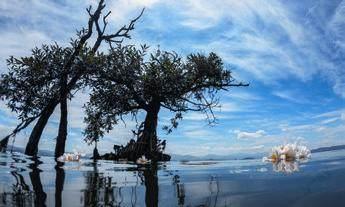Ecological Protection Drives Tourism
2022-05-30ByDonatienNiyonzima
By Donatien Niyonzima
Since the 1950s, the global economy has experienced remarkable expansion as a result of the boom in the tourism industry. Currently, the tourism sector has become one of the key pillars of growth in the global economy.
Dali Bai Autonomous Prefecture in Yunnan Province is a prime example of how tourism-led development has transformed one of the most impoverished areas of the country into a lively and prosperous prefecture.
With its abundant natural and cultural resources, tourism was identified as one of Dalis strategic pillar industries. Since 1983, it has been a popular destination for both domestic and foreign tourists. It ranks among Chinas top historical and cultural cities.

When in Dali, most visitors spend much of their time in the old town and the nearby tourist attractions such as the area around Erhai Lake. They can visit a number of historical locations, the majority of which are connected to the Southern Silk Road, once used to transport tea to other regions of China and to neighboring countries to the south and the southwest. Historically, Dali was a major commercial hub in the region, located at the intersection of trade routes linking China and Southeast Asia.
Tourism has also greatly contributed to the increase of local incomes and improvement of living standards of the lowest-income earners in rural communities in the area. According to locals, their life was very different before the tourism industry took off.
Despite the disruptions caused by the pandemic, Dali still received more than 39 million tourists in 2020, compared to more than 52 million in the pre-pandemic period of 2019. The influx of both foreign and domestic tourists into Dali has created numerous opportunities for local people, most of whom belong to the Bai ethnic group. Statistics from the local government show that the prefecture received 26.96 million tourists in the first half of 2022, with tourism revenue hitting 34.24 billion yuan($5.01 billion).
According to the local governments blueprint, the prefecture is expected to receive more than 56 million tourists in 2025 when its 14th Five-Year Plan (2021-25) period ends, with tourism revenue expected to reach 100 billion yuan ($14.65 billion).
The local government has received a great deal of praise and recognition for promoting the tourism sector to generate employment and increase local incomes while also protecting both natural and distinctive cultural resources.
After the local government started a campaign to preserve the ecosystem of the Erhai Lake basin in March 2017, the number of tourists in the area has in fact increased. All tourism and hospitality operations in the core area of the Erhai Lake Conservation Zone were suspended until authorities had made sure all related businesses had the necessary licenses and a sewage network running around the lake was installed. This ecological preservation, part of the Jointly Making Ecological Progress policy, has enabled Dalis tourism sector to raise the quality of its contribution to economic development.
These environmental protection initiatives support the national rural revitalization strategy, which has the long-term objective of making decisive progress in rural revitalization by 2035 and “completely rejuvenating rural areas with a strong agriculture sector, a beautiful and revitalized countryside and prosperous farmers” by 2050.
Experts believe that the plan to further ecological progress, with the ultimate goal of creating a beautiful China, is expected to gradually reduce the risk of major environmental deterioration in order to ensure the long-term sustainability of the Chinese economy. There are now many more options available to tourists visiting Dali, including rural excursions and spending time in the mountains, along the rivers and in the tranquil landscapes that the countryside has to offer. Businesses have also aligned their strategies with sustainable development objectives to attract visitors of all types, including those with higher spending capacity. BR
